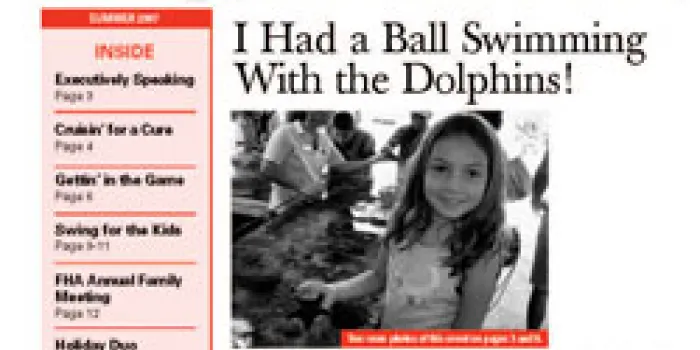In each issue of HemAware, we take a look at how local NHF chapters and associations are making a difference in their communities. This month we talk with Debbi Adamkin, executive director of the Florida Hemophilia Association.
What is the cultural makeup of your chapter’s membership?
Our membership is 33% Caucasian, 34% Hispanic and 33% African-American.
What prompted you to translate part of your newsletter into Spanish? Do you have any plans to expand the section?
We found that we had a large Hispanic population, so we decided about a year ago to do some of the articles, primarily the educational pieces, in Spanish. Eventually we would like to have the entire newsletter in English and Spanish, but that would make our newsletter more than 30 pages. At this point, it’s just too costly to translate the entire publication.
How are the stories translated?
We use a Spanish translation service. We’ve also been very fortunate that some of the bilingual healthcare educators who work for pharmaceutical companies have been available on occasion to help with translation of articles. We do try to get someone professional to do the translation because when we have used volunteers, the translation has sometimes been wrong.
Does your chapter reach out to non-English-speaking members of the hemophilia community in other ways? Are there any specific groups, meetings, etc., for Spanish-speaking people?
Yes. For the past three years, we have been able to secure grants for simultaneous Spanish translation at our annual Family Education Weekend retreat. Evaluations showed that the Spanish-speaking families felt that, although they could usually understand some of what the speakers were saying when the presentations were in English, the Spanish translation made it 100% more effective for them. We don’t do programs for Spanish-speaking people only anymore. Last year, we had a rap session for Spanish speakers only, and it was very poorly attended. We learned that non-English speakers don’t want to be singled out; they’d much rather attend the regular meeting or rap session and have a simultaneous translation.
We also have a Mothers’ Brunch, which is a smaller, more intimate meeting—usually about 30 to 40 women. We originally started it as a First Step program for mothers of newly diagnosed children. But we found that those mothers wanted to meet mothers whose children had graduated college, so we expanded it. It is for women only, and we do legislative and advocacy training. It’s primarily a networking opportunity, but we always include educational components. At the brunch, we have a translator available to sit with the Spanish-speaking mothers.
What are the challenges faced by non-English-speaking people with hemophilia (or their family members) in accessing or understanding healthcare options?
Educational and legislative materials aren’t readily available in languages other than English. This can encourage some families to remain in denial and not face certain issues. (Of course, this denial can be true of all families, whether they speak English or not.) But we never give up on a family. We’ll call, we’ll e-mail, we’ll continue to push, and eventually these families come around.
Do you have any advice for other chapters that want to reach out to non-English-speaking people in their community?
Try doing simultaneous translation at your annual meetings or weekend retreats. Before and after sessions, we hand out evaluation sheets with questions that pertain to the presentations, which help us determine what knowledge they walk away with. We’ve found that small, intimate meetings, like our Mothers’ Brunch or rap sessions, can be very effective with a simultaneous session.
The Florida Hemophilia Association is located in Palmetto Bay. To contact the association, call 888.880.8330.

